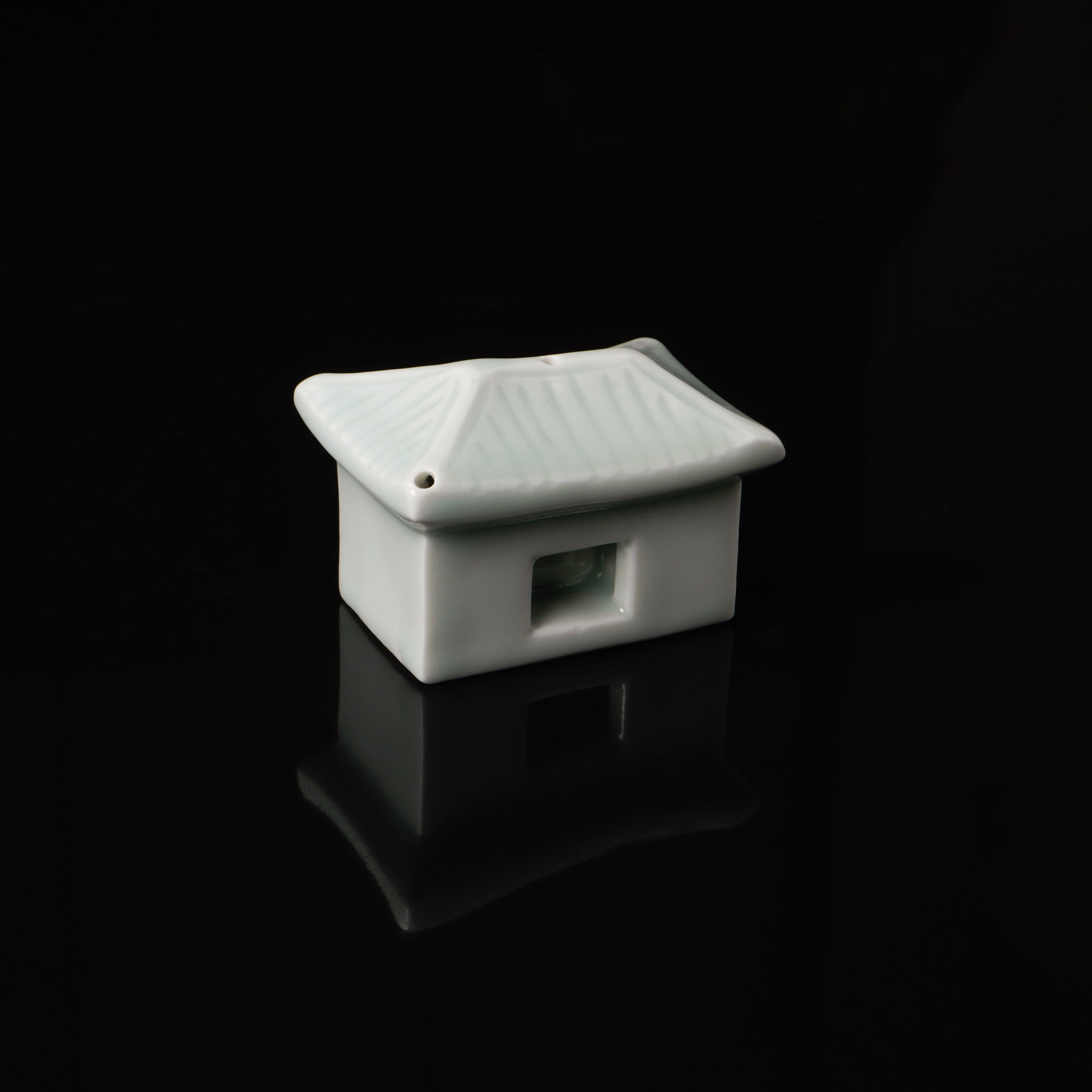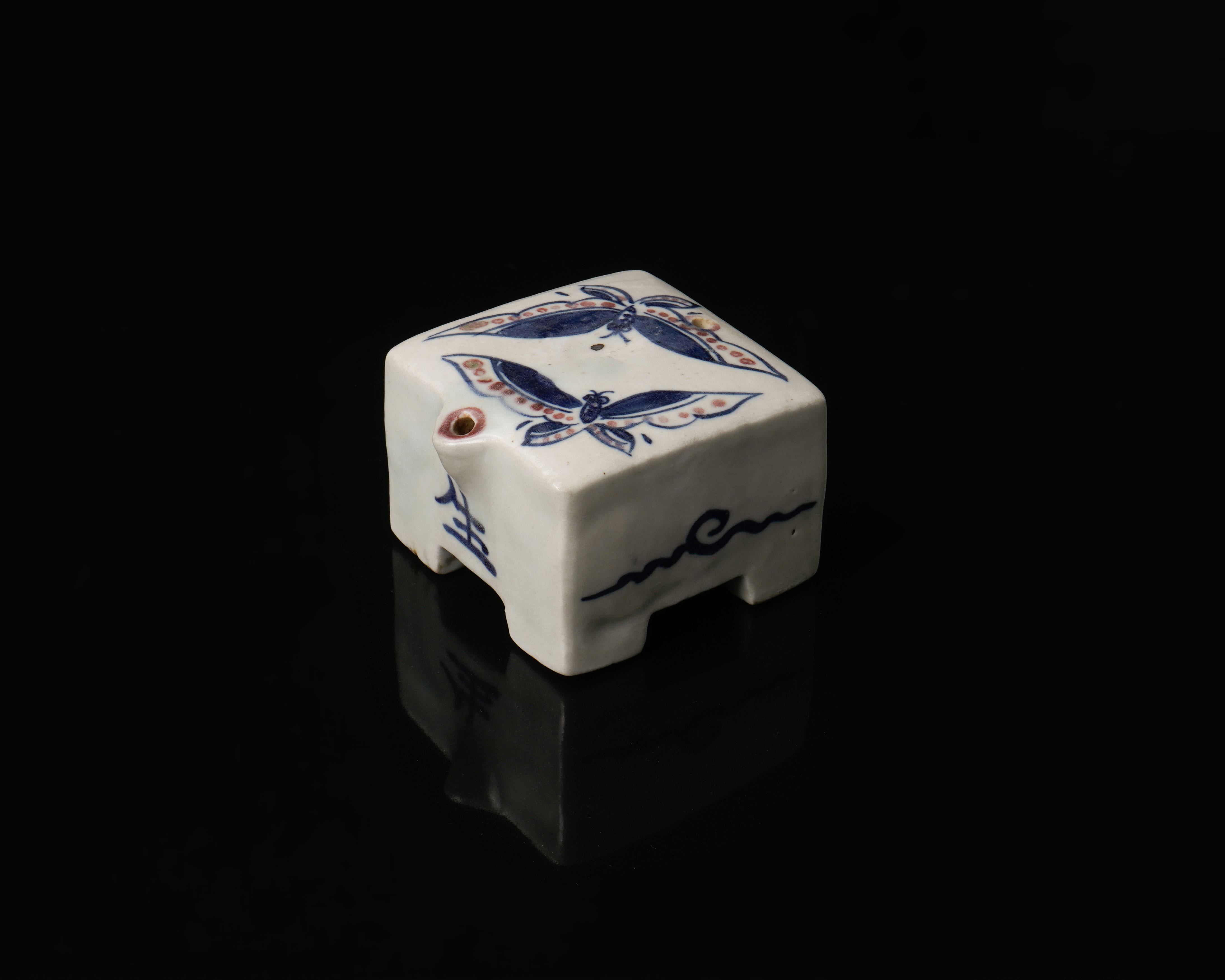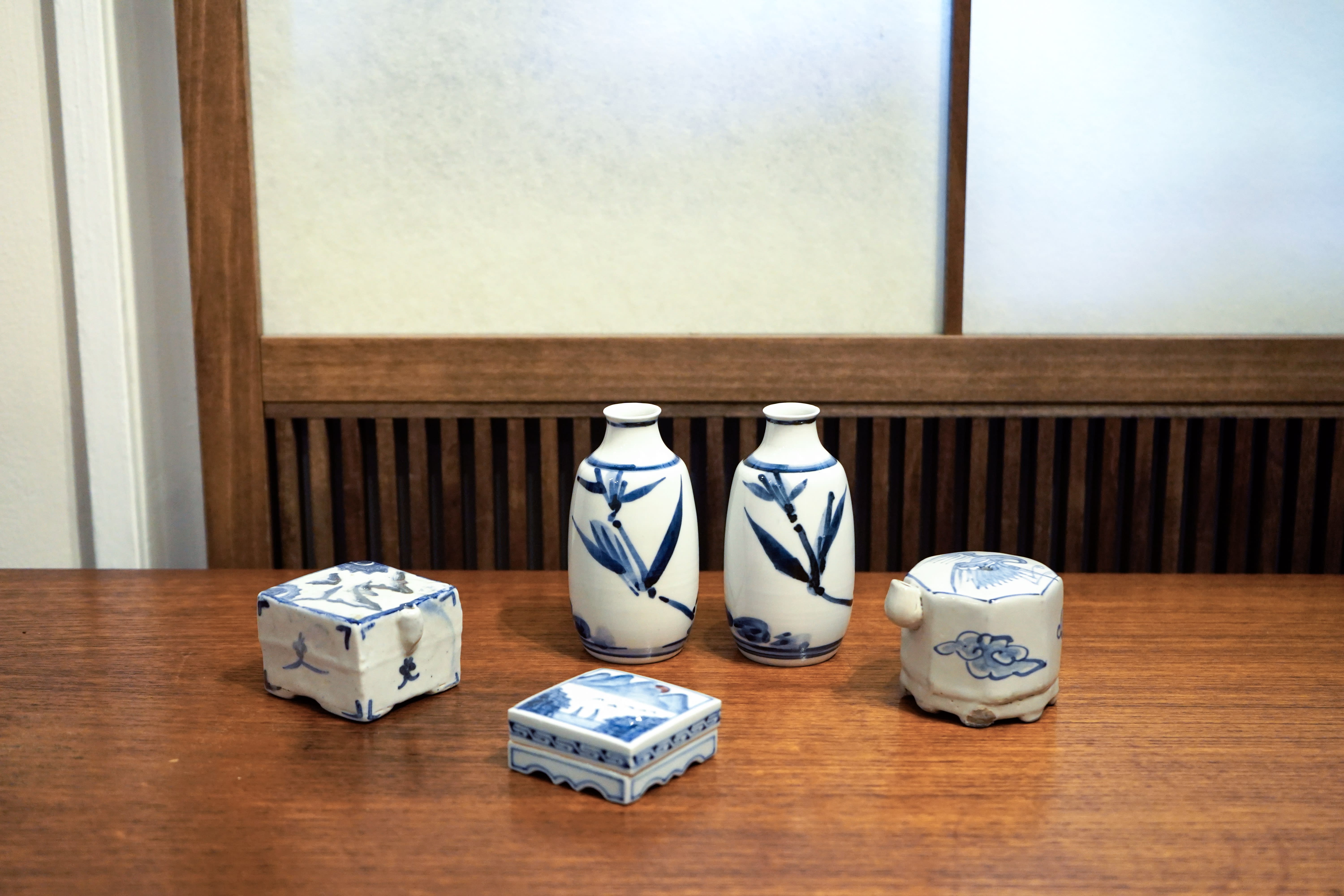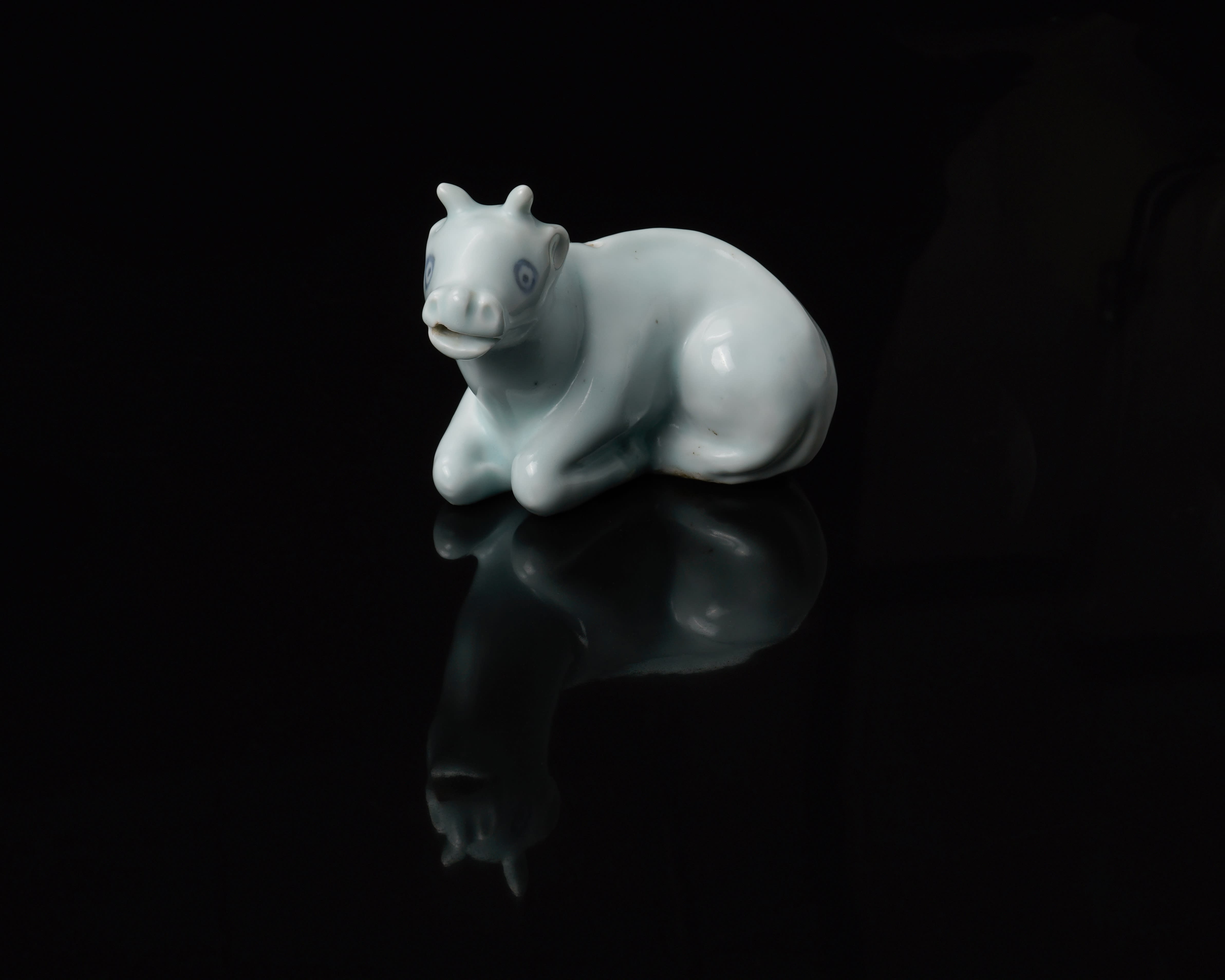
A water dropper is an essential tool for calligraphers, traditionally included in the set of implements necessary for both writing and painting, alongside the "Four Treasures of the Study 文房四寶"—brush, ink, paper, and inkstone. These droppers, often crafted from ceramic, feature elaborate shapes and intricate designs. While ceramic is the most common material, jade and metals like copper and brass have also been used in their creation. Ingeniously designed, ceramic water droppers have hollow bodies with two small holes, one for water and the other for air, allowing controlled droplets to fall onto the inkstone, ensuring that only a few drops are released at a time. In Japan, these objects are known as “Suiteki 水滴" (it’s literal translation meaning "water droplet"). These fascinating small objects, which originated further west in Korea and China, offer unique insights into the world of calligraphy, scholarship, and literati culture.


Blue and white ceramic water droppers from Joseon (Lee) dynasty, Korea.

Takenaka Ko 竹中 浩 (b. 1941), hakuji water dropper in the shape of a small shrine.
The appreciation of calligraphy as a sophisticated craft, an art form, and a vehicle for ideological or religious expression in Japan dates back to the 6th century AD when Buddhism and Confucianism were introduced to the country. At that time, Chinese calligraphy entered Japan, particularly in the form of sutras and commentaries, written in various scripts using brush and ink on paper. However, it wasn't until the late 18th century that water droppers became popularized as an essential scholarly tool in Japan and valuable form, following the influence of erudite culture imported from Korea's Joseon courtly world.


Two ceramic water droppers from Joseon (Lee) dynasty, Korea.
During the 19th century in Korea, water droppers were often whimsical and varied in shape, sometimes with painted decoration. They became fashionable among scholars: a scholar from the Joseon dynasty (1392-1910) would have used such a tool to drip water onto an inkstone to grind ink for calligraphy or painting. The wide array of imaginative designs seen in the water droppers of the 18th and 19th centuries reflects the creativity and wit of both their makers and consumers. For the ruling class and literati, who followed Confucian ideals, these tools were part of their scholarly pursuits and self-cultivation practices.
 Group of works: Water droppers by Murata Gen, Shimaoka Tatsuzo, and Hamada Shoji / Yunomi by Kawamoto Goro.
Group of works: Water droppers by Murata Gen, Shimaoka Tatsuzo, and Hamada Shoji / Yunomi by Kawamoto Goro.
Over time, Japanese potters, artisans, and ceramic enthusiasts have embraced these charming objects, recognizing them as integral to the process of scholarly reflection. The significant influence of Korean ceramics within the Mingei movement may explain why modern masters of Japanese folk pottery, such as Hamada Shoji, Kawai Kanjiro, Shimaoka Tatsuzo and Murata Gen, were fascinated with water droppers. The ingenious two-hole design of the object serves as a welcome form for those who deeply contemplate functionality. Moreover, it is pertinent to note that in contemporary society, the use of water droppers is no longer confined to the erudite elite; instead, it symbolizes personal introspection among other things.

Group of blue & white objects: two blue & white water droppers from Joseon (Lee) dynasty, Korea / Incense box by Ahn Dong Oh (1919-1989) / Pair of sometsuke sake bottles (tokkuri) with bamboo drawings by Kondo Yuzo (1902-1985).
We are delighted to present a curated selection of 30 water droppers from both Japan and Korea in our winter 2024 exhibition "Treasures in Miniature", on view online from November 11 – December 13th! Click here for more information.

Joseon (Lee) dynasty stoneware water dropper in the shape of an ox, Korea.